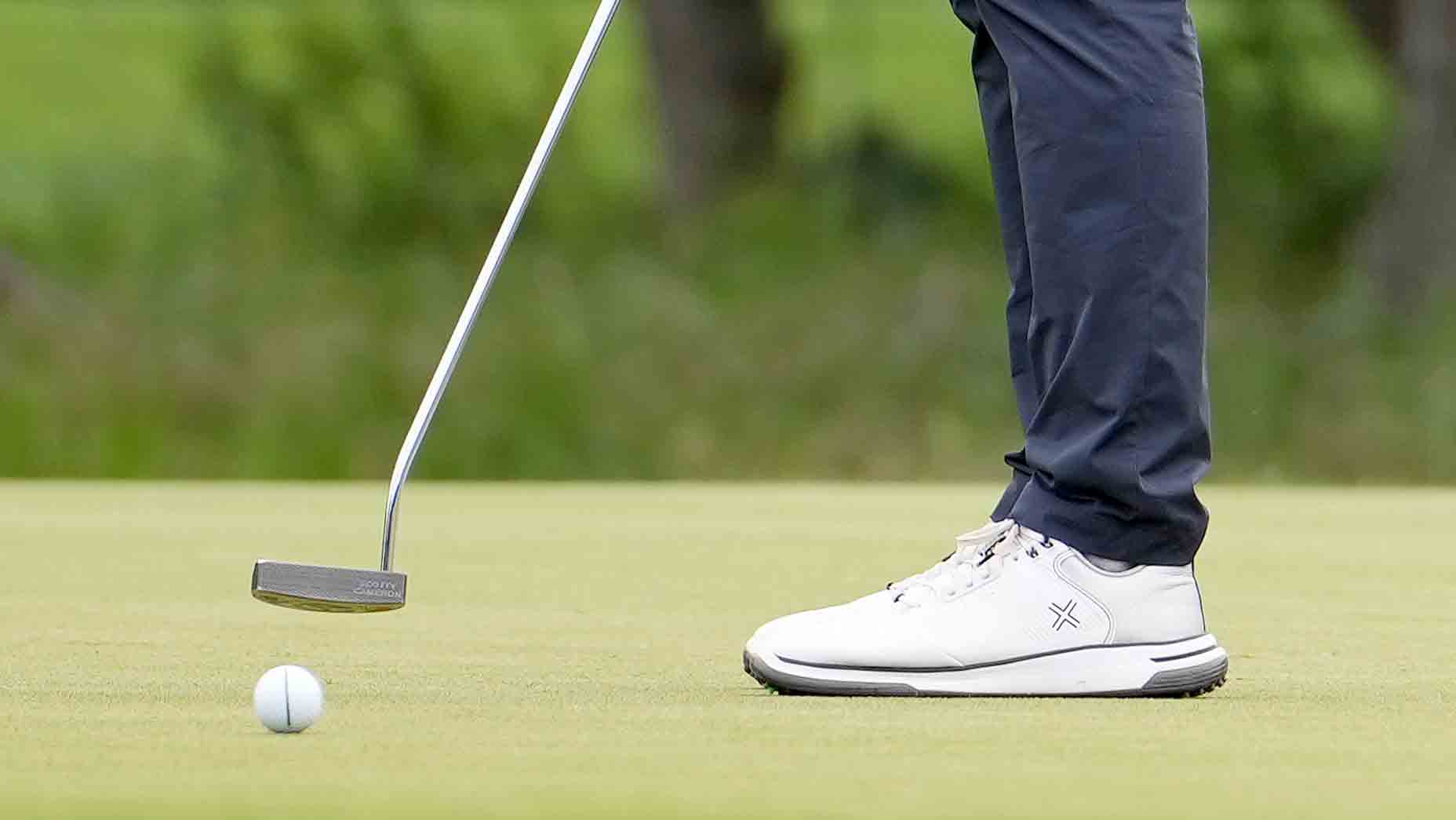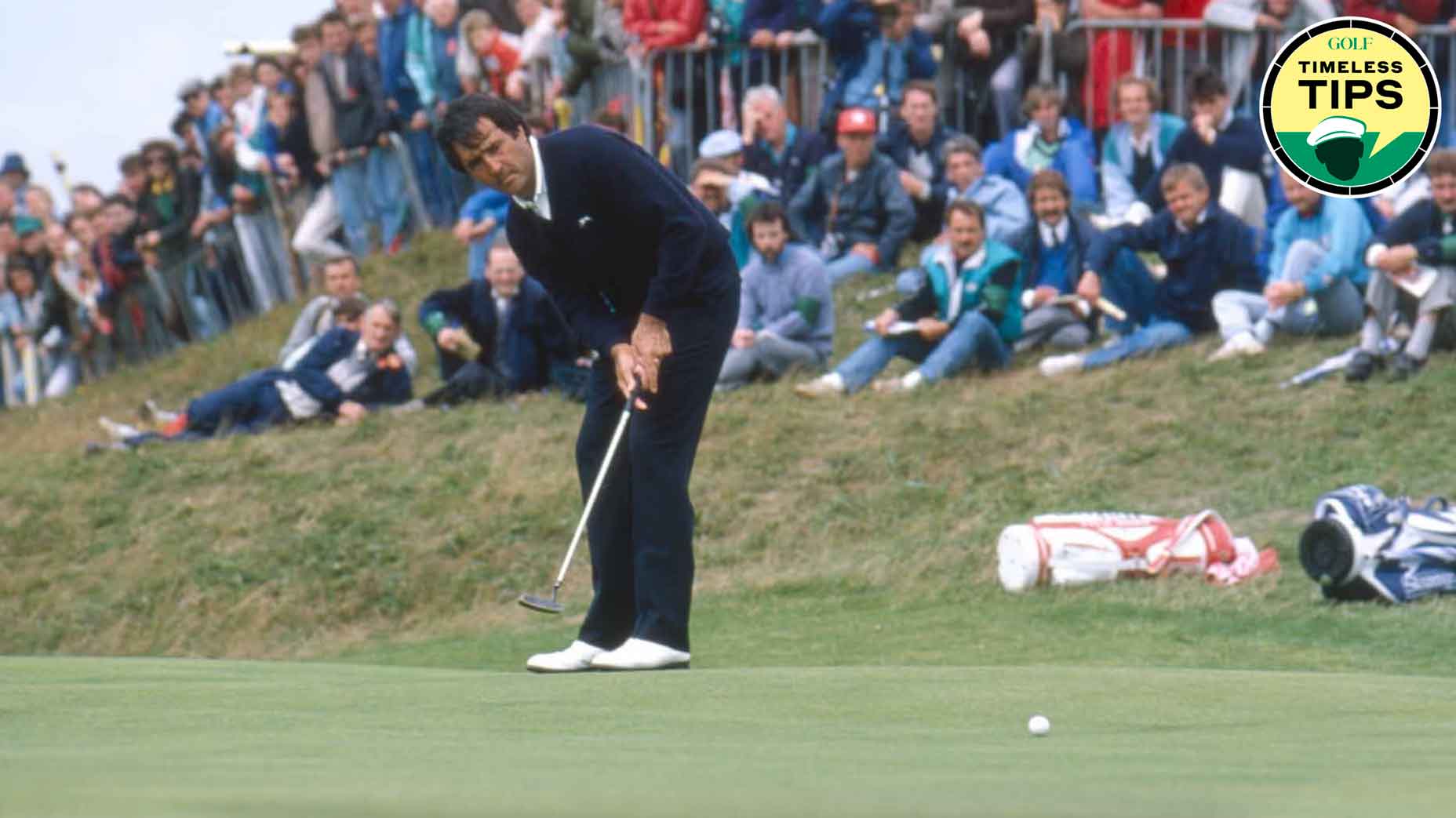Dave Pelz breaks down Jordan Spieth’s silky stroke and how it can work for you.
Almost every golfer grips the putter with their right hand below their left. It’s a natural arrangement, mostly because it’s the way you grip your irons and woods. But for some of you, gripping your putter with your right hand low causes missed putts.
First, a right-hand-low grip positions your dominant hand in a dominant position on the handle, which can cause problems. In putting, the low hand is the power hand—it dictates the action when you putt. Worst-case scenario for some? Your too-dominant right hand flicks the putterhead through impact, shuts the putterface, or both—and you miss putts you should make.

Second, a right-hand-low hold at address tends to drop your right shoulder significantly below your left (left photo, above). When hitting your driver, tilted shoulders at setup are important, because they promote an upward strike, creating the optimal conditions of low launch and high spin. When putting, however, tilted shoulders make it difficult to follow-through, leading to a jabbing motion instead of a smooth stroke.
So if you miss a lot of putts that you think you should make, or you feel like you’re “hitting” the ball instead of stroking it, buck the conventional and putt left-hand low. How? Just reverse the position of your hands on the handle. It’s that simple! Placing your dominant hand in this new, passive position won’t overpower your stroke. It will add balance and help even out your shoulders. It may also provide the touch and consistency you’ve been missing on the greens. When your shoulders are parallel to the green (above, right), your backstroke and through-stroke move more like a pendulum, freeing your right arm to extend your stroke down the line and decreasing the chances that you’ll make a speed-killing jab at the ball.

This grip isn’t new. Dozens of PGA Tour (like Jordan Spieth, above), LPGA and Champions Tour pros have used it over the years, but I don’t see enough of it in the amateur ranks. It’s time for a left-hand-low wake-up call. The benefits of putting this way won’t materialize overnight, but be patient—if the change isn’t right for you, you can always go back to your conventional grip. In my experience, however, many who “go low” never give it up. The improvement is real and lasting. The proof is more one-putts and increased confidence on the greens.
Follow Dave Pelz on Twitter @dave_pelz and see a list of upcoming three- and two-day schools and one-day clinics at pelzgolf.com.
For more news that golfers everywhere are talking about, follow @golf_com on Twitter, like us on Facebook, and subscribe to our YouTube video channel.




